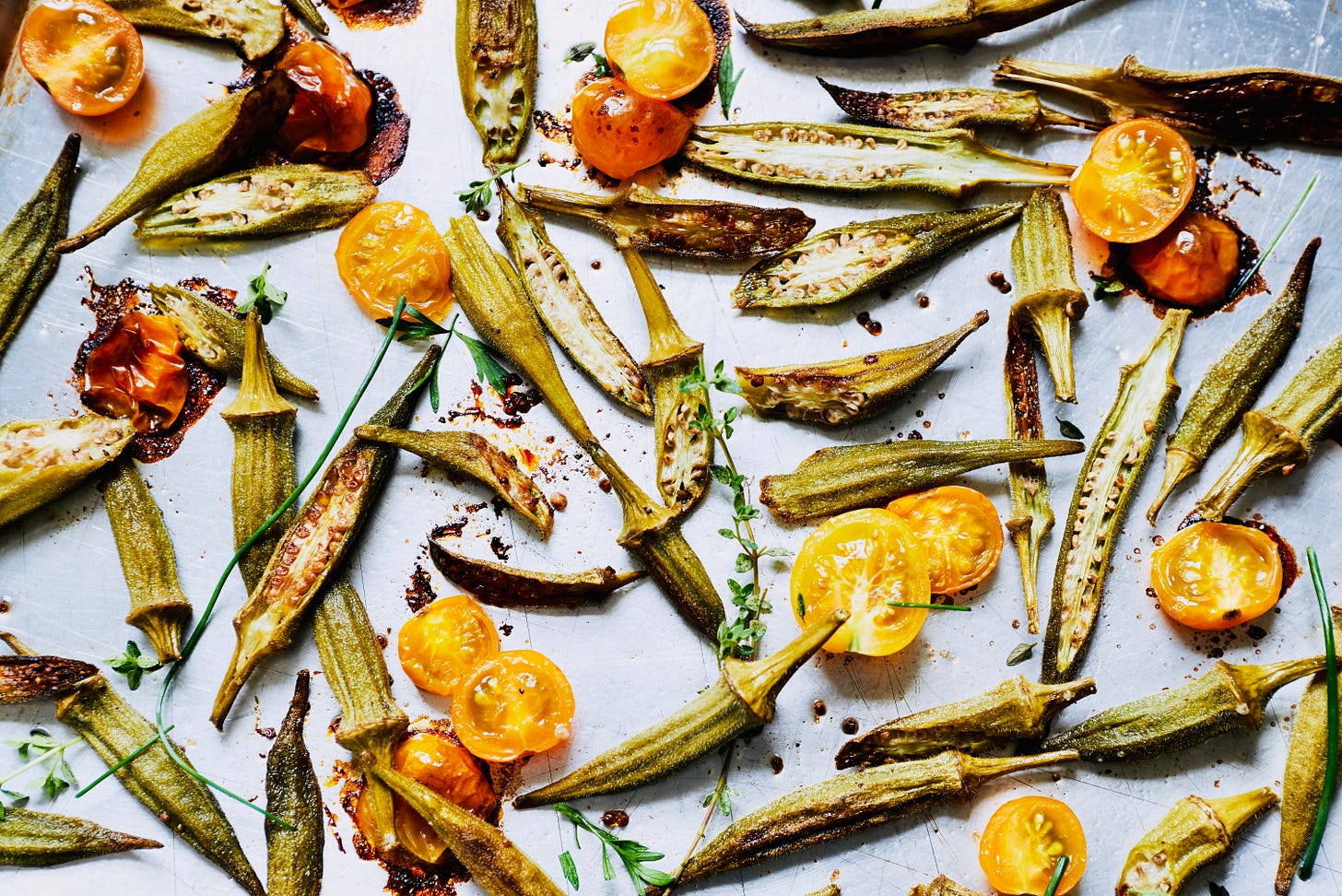Need Bright New Ways to Cook Summer Vegetables? - No. 137
Roast okra, make a squash casserole on top of the stove, and simmer green beans with brown sugar and pepper. And zucchini is coming Thursday!
I live in the land of the meat and three. Country music may bring people to Nashville, but meat and threes—one meat offering and a trinity of veggie sides to go with it—feed them.
We ate meat and three at home every night of my youth. My mother didn't think she had prepared an adequate meal unless there were at least three vegeta…




